The best reusable plastic wrap alternatives for storing food.
I have to admit, I’ve never, ever been a fan of plastic wrap. We just never used it as a kid in my house. And I never used it once I left home. My thrifty parents taught me long ago that reusable items always save money compared to disposable items. So cling wrap was one of those kitchen wonders that I’ve never relied on.
That’s not to say that I didn’t have ONE box of the stuff in my kitchen. Usually I had a box that was many years old. It would be on hand for the random times that I needed it, such as wrapping up wet paint brushes to keep the paint wet or wrapping up cookie dough for the one time a year I made cookies at home.
You might have grown up using plastic cling wrap all of the time, though, and can’t imagine another way to store or heat up food. I hear you.
But change is good in this situation! You might think that nothing can replace that box of Saran Wrap, but I’m hear to show you all of the wonderful ways that you can use non-plastic food wraps!
Not only will these eco-friendly, zero-waste reusable food wraps save you money, they will also protect your food from nasty chemicals potentially leaching into your leftovers. Because no one spends time cooking a meal in the kitchen and then wants unknown chemicals coming into their food while it’s stored in the refrigerator or freezer.
Why I Avoid Plastic Wrap on My Food
There is nothing natural about plastic wrap. First it’s plastic. Duh. Second, it’s a plastic that bends and twists and can be molded into any shape you want. And plastic doesn’t normally do that. So that means that something else is added to plastic to make it this flexible. Which means that plastic wrap is a whole bunch of chemicals that I don’t want on my food and in my body.
But why the worry? Can the chemicals in plastic wrap actually get in your food?
Yes, and it’s easier than you might think.
When plastic wrap is in contact with your food, it is believed that chemicals can leach from the plastic wrap to the food itself. Especially when plastic wrap is in contact with meats and cheeses. That’s because some plastic chemicals are more soluble in fats and oils. A lot of those chemicals can be endocrine disruptors, which means they can cause hormonal problems (and after my hormonal imbalances, I wouldn’t wish that on anyone). Estrogen is one of the biggest hormones that is affected by endocrine disruptors.
Not too long ago (prior to 2006), many plastic wraps contained PVC, a chemical you don’t want in your food, for sure. Nowadays, plastic wraps are made with different chemicals, including LDPE (low-density polyethylene) which are deemed safe.
The logic doesn’t work with me, though. We were promised that they were safe when they came out decades ago. When they contained PVC. And everyone said they were fine to use.
Until they weren’t. So why do we have unquestioning faith that this new plastic ingredient is completely harmless?
If you’re like me and really question the long-term health affects of some of these wonder plastics and chemicals, then you will want to avoid them. And it’s easier than you might think.
Plastic Wrap Alternatives for Storing Food
Storing food doesn’t have to be complicated. There are so many wonderful ways to store food without worry of chemicals and toxins.
Investing in some great reusable food storage containers is the first step in a healthy kitchen.
I absolutely love all of these plastic free food storage containers and stainless steel lunch containers. So by getting a few of these, you’ll probably reduce your need for plastic wrap by 80% or more.
There are always some unique ways that you will need to store food, though, where you wish for some cling wrap, including:
- Have a bowl but no lid
- You are traveling and don’t want to use heavy glass or bulky storage containers
- Want to store food in the pot you cooked it in
- Have a half of a casserole that you want to leave in the baking dish
- Looking for kid-friendly food wraps that are great for a lunch box or backpack
That’s where these plastic wrap alternatives that are great reusable food wraps come in handy.
Silicone Suction Lids
I have to admit. When I saw a silicone suction lid for the first time, I totally thought it was a scam. There was NO WAY that the silicone lid would suction to a bowl, I thought.
Boy, was I wrong!
The silicone suction lids come in many sizes and colors. Which is great for customizing to your individual needs and wants in the kitchen. The flat lids are easy to store, which is bonus points, too!
So how do reusable silicone lids work? Simply put a silicone lid on your bowl, pot, cup, etc. The lid needs to be larger than the opening that you are covering. Somehow (I don’t know the exact scientific methods of how it works) the silicone creates an air-tight seal which locks in freshness.
Plus, you can theoretically lift the bowl or pot or cup with the handle to the silicone lid. Yes, I’ve tried this and it works. No, I’m not going to carry all of my leftovers to the fridge this way. 😉
Silicone Stretch Top Lids
These unique reusable food wraps are similar to the silicone suction lids. However, they are meant to wrap around the lid of your bowl, cup, pot or pan. Not just simply rest on top.
So silicone stretch top lids might give you more peace of mind if you are worried about your kids or your husband taking a container out of the refrigerator and spilling it everywhere.
Silicone stretch top lids can actually be used to wrap around small food, too. So they could be used to wrap up a half-eaten piece of fruit, or maybe half a sandwich.
You can get a multi-pack of silicone lids for less than the cost of half a dozen rolls of plastic wrap. And they’ll last a lot longer!
Beeswax Wraps
This unique reusable food cover is the bees knees, y’all! Okay, so bad pun, but did you know that beeswax actually makes a great food wrap to keep food fresh?
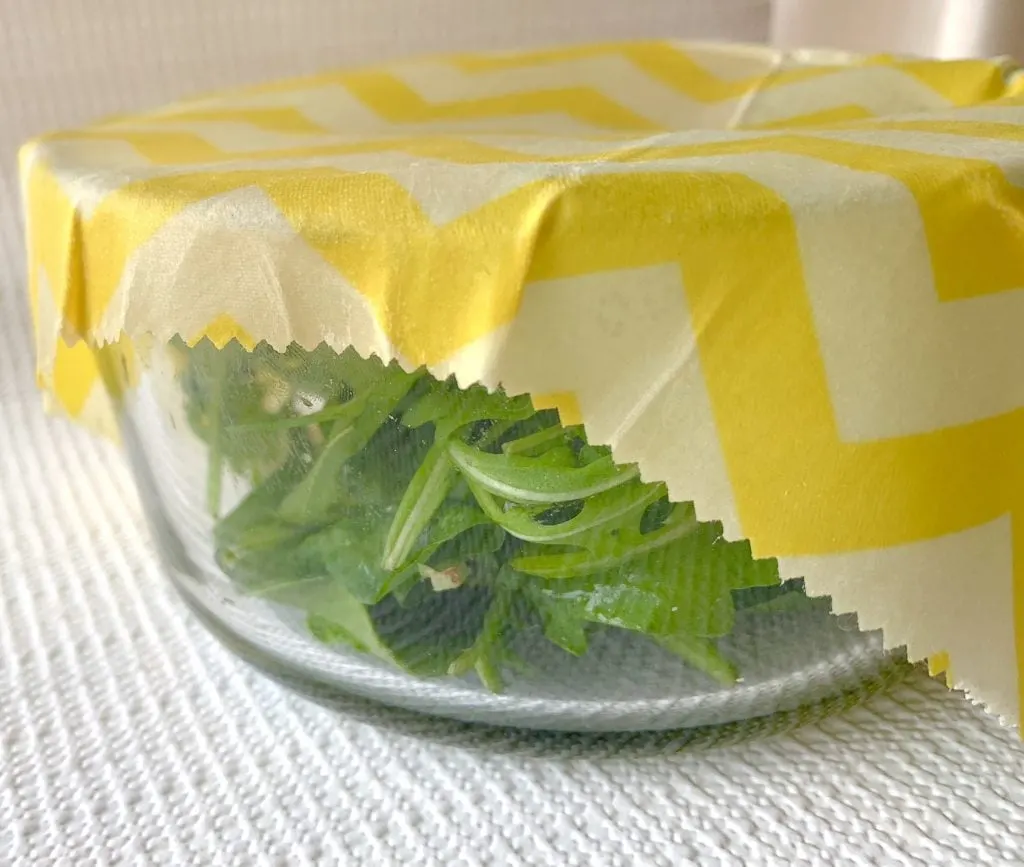
If you are looking for an all natural plastic wrap alternative, then beeswax wraps are ideal for you. Using fabric, beeswax, and some oil, these eco-friendly plastic-free food wraps are unique and oh, so handy.
Beeswax wraps are great to wrap around a sandwich, some crackers, or cover a bowl or plate. You don’t want to store anything wet (like lasagna or casseroles) or anything with meat in these reusable food wraps.
While a beeswax wrap looks stiff and flat, the heat of your hands is what molds the wrap to cover the container that you want to use. So mold beeswax wrap in any way you want, very similar to plastic wrap (without, you know, the plastic).
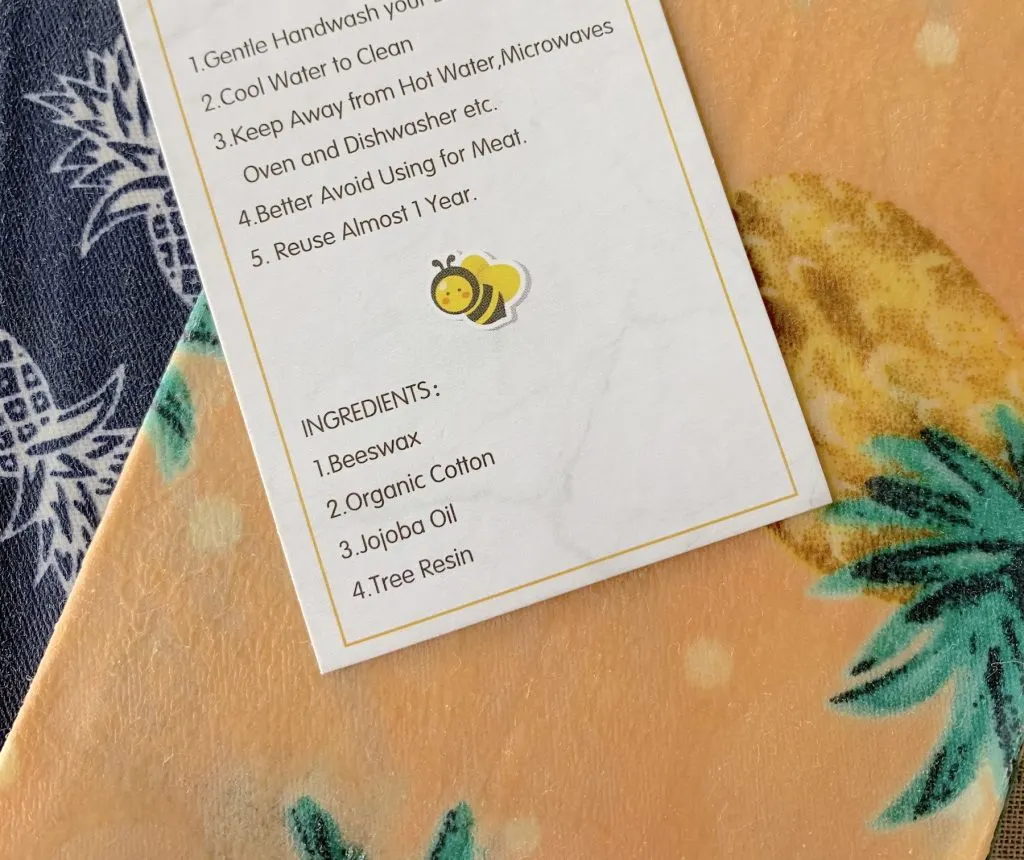
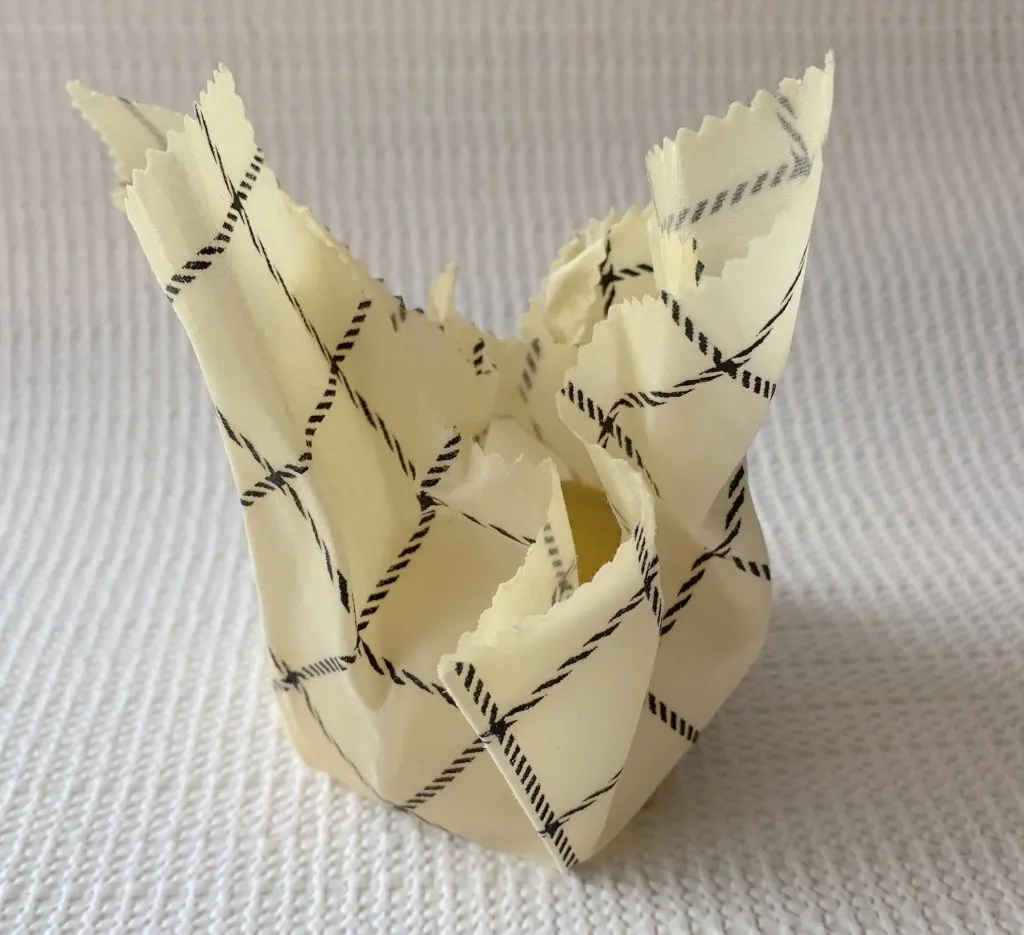
How do you clean beeswax? Good question! It turns out that beeswax covered products can be washed. But you only want to use cold water and soap. Otherwise, hot water would make the bees wrap melt and maybe remove some of the beneficial beeswax.
Again, bonus points for these food wraps being flat and so easy to store!
Fabric Bowl Covers
Stretching a reusable cover over your existing bowls and pots is easy with a fabric bowl cover. The elastic edges allow you to cover any size or shape of dishes that you have. Plus, they can be put in the washing machine to clean with hot water for sanitization.
What you want to look for in a bowl cover is a fabric that is not lined with plastic. Otherwise, your goal of plastic-free food wraps pretty much is wiped out. And, a plastic lining won’t let you easily throw the food wrap in the washing machine without ruining it over time.
I see a lot of fabric bowl covers made with PUL Fabric, which is a waterproof fabric coated with Polyurethane Laminate. Nothing about the words “polyurethane laminate” makes me want to have it near my food.
PUL fabric is most often used with cloth diapers for babies, because of its moisture repelling properties.
Here’s our easy DIY tutorial if you want to know how to make your own fabric bowl covers with fabric not coated in plastic.
Sandwich Wraps and Food Bags
Similar to bees wraps, these cloth sandwich wraps and food bags are great saran wrap alternatives for storing food.
What I love is that so many of these sandwich wraps and food bags are customized in a variety of colors, prints, fabrics and sizes. You truly do get to choose what makes you happy and expresses your personality.
The frustrating thing is that so many of them are made with PUL Fabric (also called oilcloth, too), just like the fabric bowl covers above. It’s great for wiping off food and keeping jelly from soaking through the fabric before lunch time. However, it’s still plastic.
So you’ll have to make the judgment call on whether you want plastic wrap alternatives for storing food to actually be coated with a plastic. If you can buy one wrap or bag and save 300 disposable ones in the course of using it, then it might be worth it for you.
There are PUL-free sandwich wraps and food bags, you just have to really hunt for them. This Roots Wrap is a great one that is coated with beeswax and natural ingredients, yet can be closed up with a button.
If you don’t mind disposable sandwich bags made of natural materials, these paper sandwich bags are great, too.
Soy Wax Paper / Parchment Paper
Okay, these options are not reusable. But they are more healthy and sometimes the perfect option for some situations. Let’s be honest, sometimes you know food is going to be messy or get greasy and you don’t want to deal with the grossness afterwards. That’s when a disposable plastic-free food wrap comes in handy, such as wax paper made with soy and not petroleum or unbleached parchment paper.
I have to admit, there have only been one or two times in my life when I’ve used wax paper or parchment paper to store food. If you do need to use it, just tear off a piece big enough to totally wrap around what you’re storing. If you’re putting it over a bowl, pot or pan, a rubber band is a great way to keep the paper on for covering the food in the refrigerator or on the countertop (do NOT microwave the rubber band).
Related Posts:
Substitute for Plastic Wrap for Heating Food in the Microwave
Plastic wrap is often used specifically in heating up food in the microwave. You probably want to use it as a food cover to prevent splatters inside your microwave.
However, using plastic wrap in the microwave is actually the one place I AVOID at all costs! That is because exposing plastic to high heat and having it touch your food at the same time is potentially setting yourself up for some chemicals leaching into your food. Heat allows the small molecules to move more quickly, which means that the chances of it coming into your food are more than if plastic was touching food at room temperature.
While we can debate the health aspects of microwaving food, there is also the reality of every day life. Sure, not using the microwave is the best. But sometimes life is just too real, y’all, and a microwaved meal is the only option if you want to eat at all.
So there are no judgments there from me. I’m just giving you the tools to use in everyday life and avoid the nasty stuff when you can. So here are my best choices for a substitute for heating food in the microwave.
No matter what you choose, always try to make sure that the product is NOT TOUCHING THE FOOD when you heat it. Microwaving in glass and ceramic is fine. But as far as the coverings on top of the dish, try to allow at least an inch of space between the cover and the food.
Silicone Lids
These are the same silicone suction lids that I mentioned before. I find they make great splatter guards in the microwave, too.
What you want to be aware of, though, is DON’T completely cover the bowl or cup that you are reheating. There needs to be a place for steam and heat to escape.
So cover the bowl, cup or plate about 75-90% of the way, allowing most of the food to be covered but enough room for steam to be released.
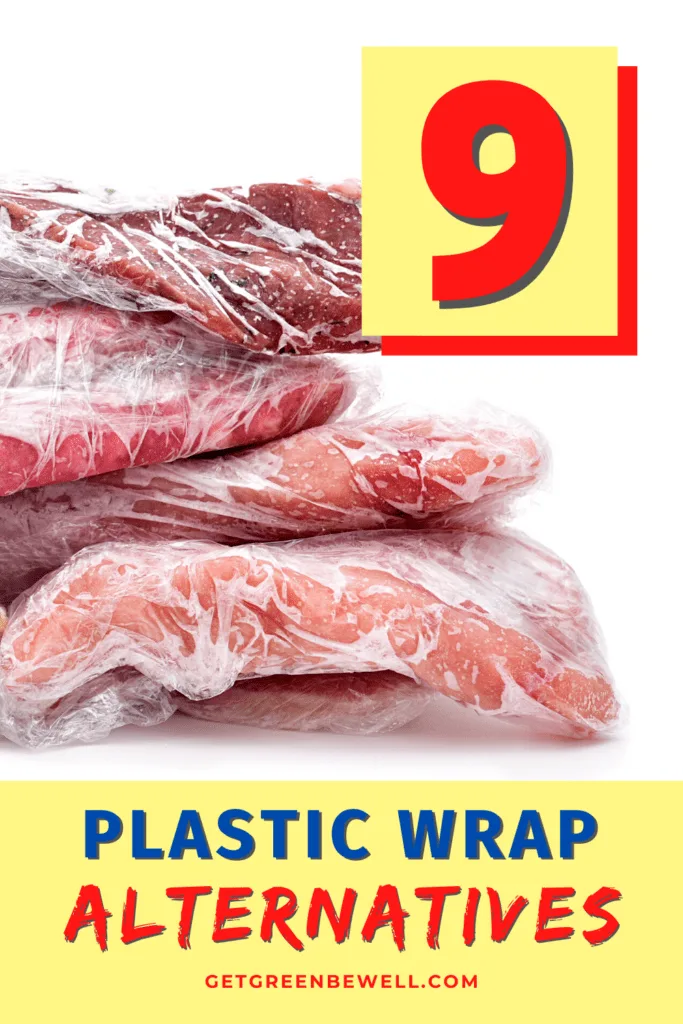
Microwave Cover
Okay, it’s not plastic-free. That’s for sure. But domed microwave covers might be a great idea if you reheat food in the microwave a lot. Let me explain.
The problem with plastic wrap in the microwave is that it gets hot and is touching your food at the same time.
But if you don’t allow plastic to touch your food when heating, there is a lot less worry (or none at all) about chemicals in plastic leaching into your food while reheating.
I have plastic microwave covers at home. I use them to put over a ceramic or glass plate when reheating food. And I also make sure the plastic never touches my food.
They are great at capturing food splatters during reheating the food in the microwave. I buy mine at The Dollar Tree for just a buck. But they are readily available in most home stores, too.
Why not just use plastic wrap then, you ask? First, these microwave covers are reusable. There is no waste. Second, they are super sturdy. They will not accidentally sag onto your food. While you might think that you don’t have plastic wrap touching your food before putting it in the microwave, the soft plastic can start to bend and warp with the heat, which results in the plastic being on your food.
Paper Towel
Paper towels are great for reducing food splatters in the microwave. I often wrap a bowl with a couple paper towels (not separated at the perforations) to prevent food spitting when reheating.
They are disposable, but I reuse the paper towel after the food has heated by wiping off the inside of the microwave while it is still hot and steamy. So I feel I get two uses out of the paper towel, which is a good thing!
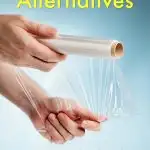
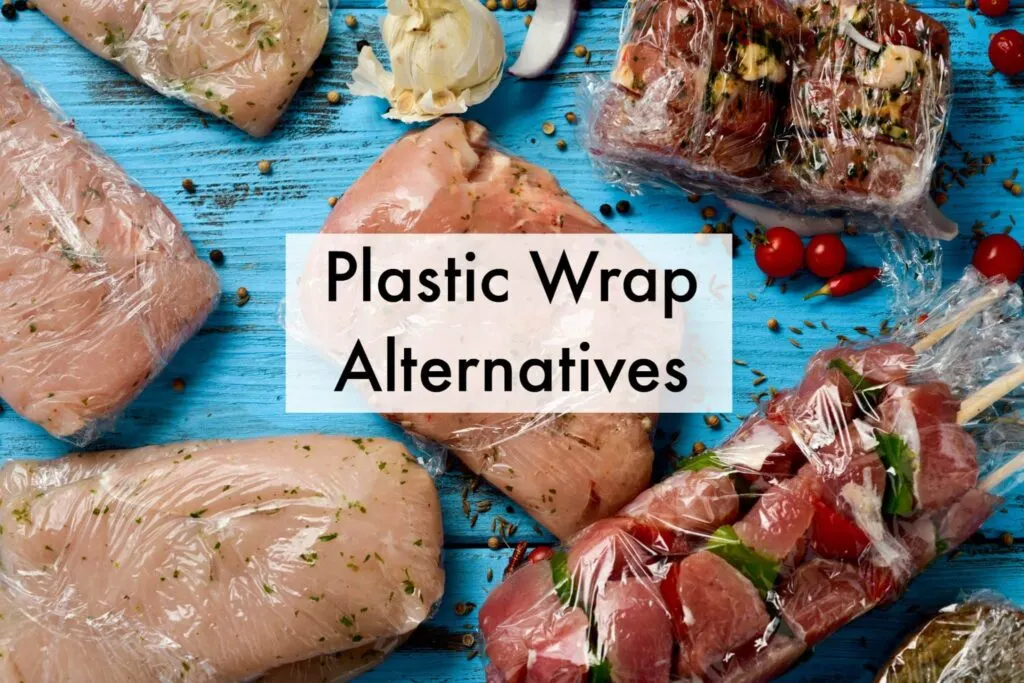
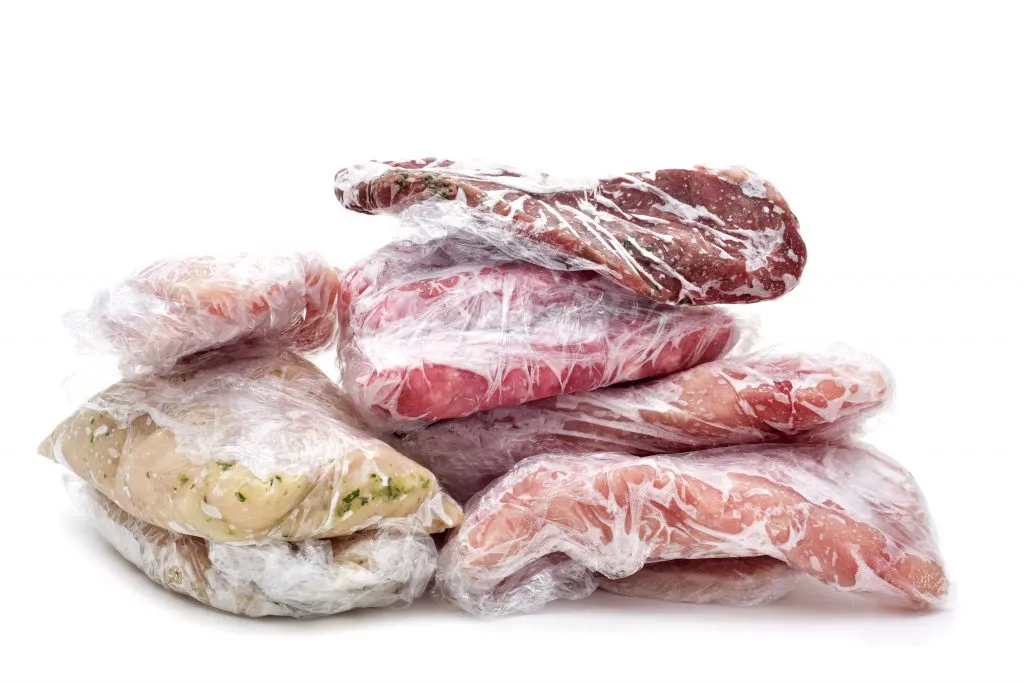
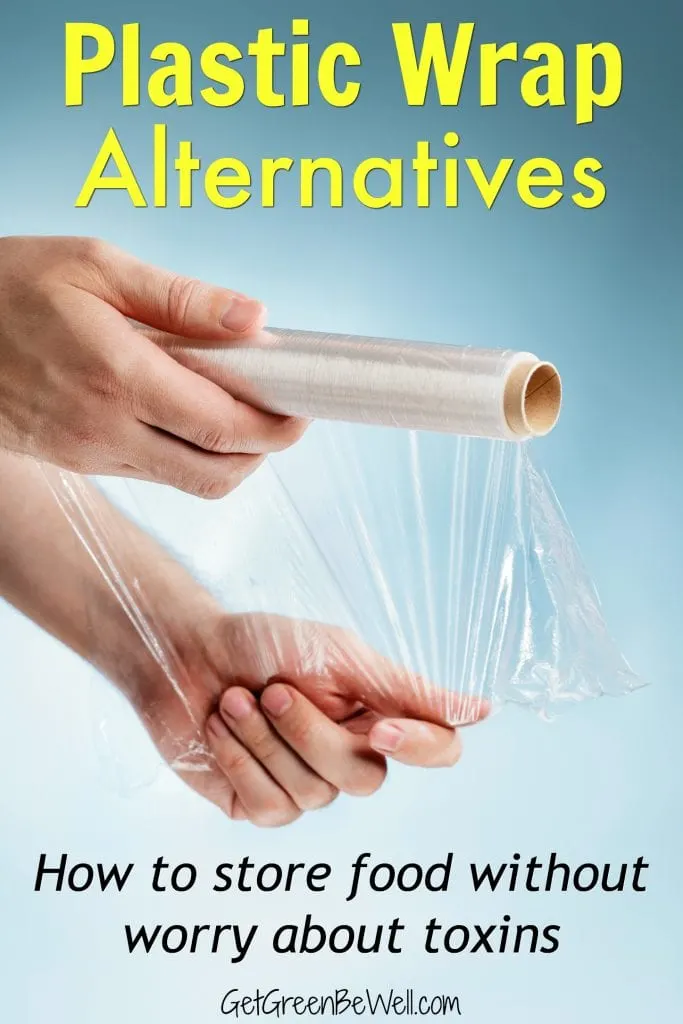
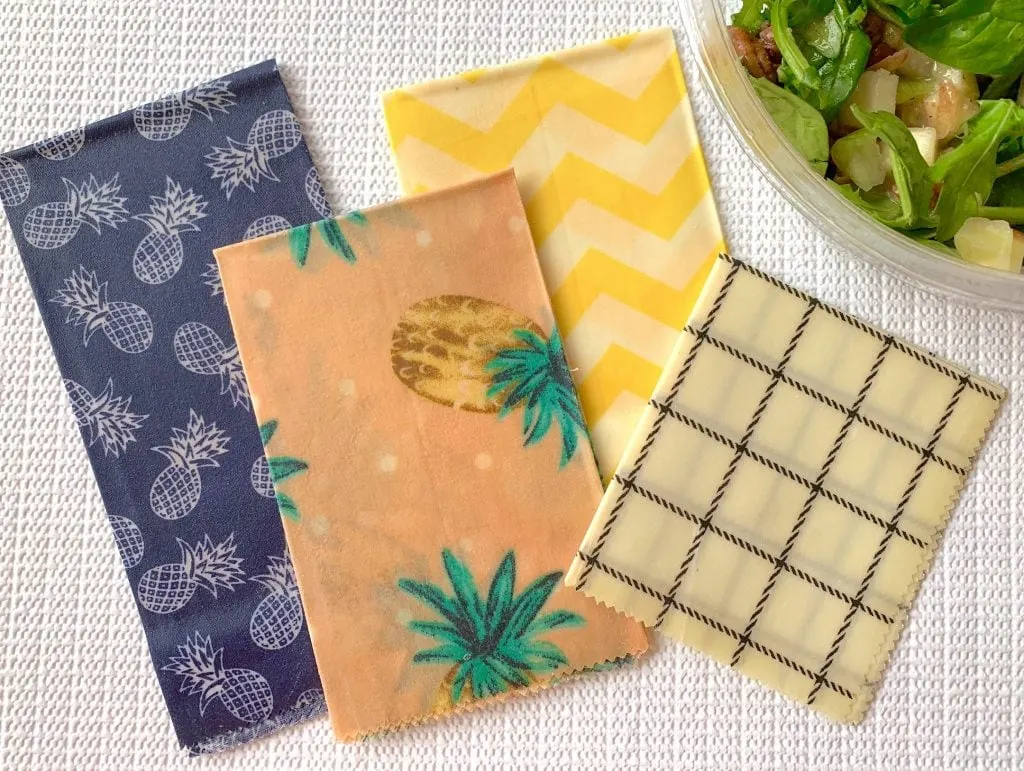
Maggie
Monday 24th of August 2020
What is your non-plastic alternative for wrapping meat portions? You have so many photos of frozen meat wrapped in plastic, yet you haven't addressed that in your article.
Kimberly Button
Wednesday 2nd of September 2020
Maggie, Any of the options in this article will work for the food storage: https://www.getgreenbewell.com/plastic-free-food-storage-containers/ Particularly the butcher brown paper wrap and tape that works with it.
Maggie
Monday 17th of August 2020
So many of your photos in this post are of frozen meat wrapped in plastic, yet you don't address it in the article That's just about the only time I use plastic wrap. I haven't found a good, recyclable, affordable substitute for wrapping meat for the freezer. What do you do?
Kimberly Button
Wednesday 2nd of September 2020
I have another post that focuses more on the storage rather than heating. Check it out here: https://www.getgreenbewell.com/plastic-free-food-storage-containers/
Linda J Hinchman
Friday 7th of August 2020
What is best way to store silicone food wraps?
Kimberly Button
Sunday 9th of August 2020
I just put them in the cabinets and drawers. I don't fold them up or do anything differently.
Top Natural Living Blogs You Should Check Out - A Blissful Blue
Monday 25th of March 2019
[…] TO GROW AND BLEND YOUR OWN TEAS PLASTIC WRAP ALTERNATIVES FOR STORING AND HEATING FOOD BEST BEDROOM PLANTS FOR BETTER […]